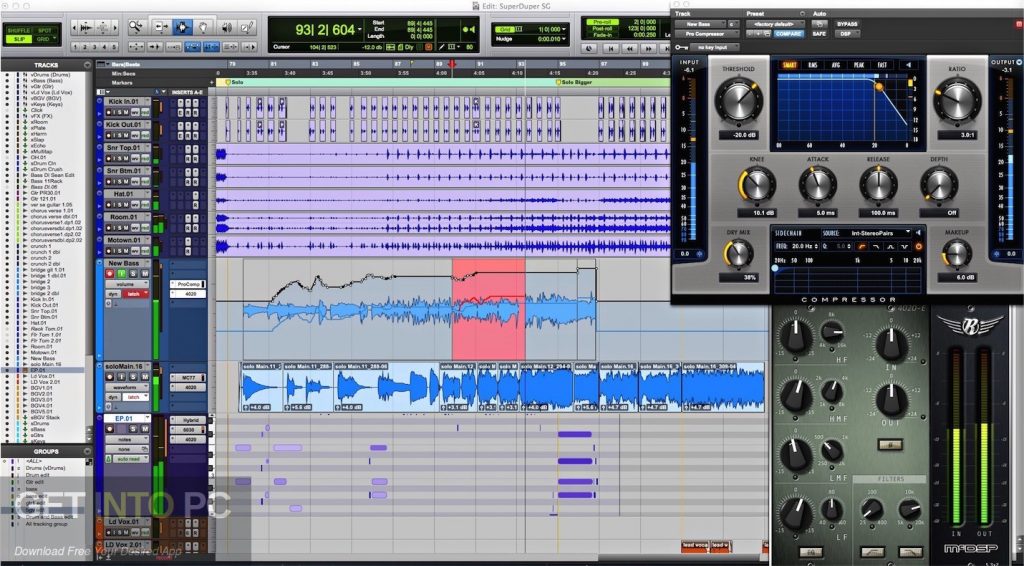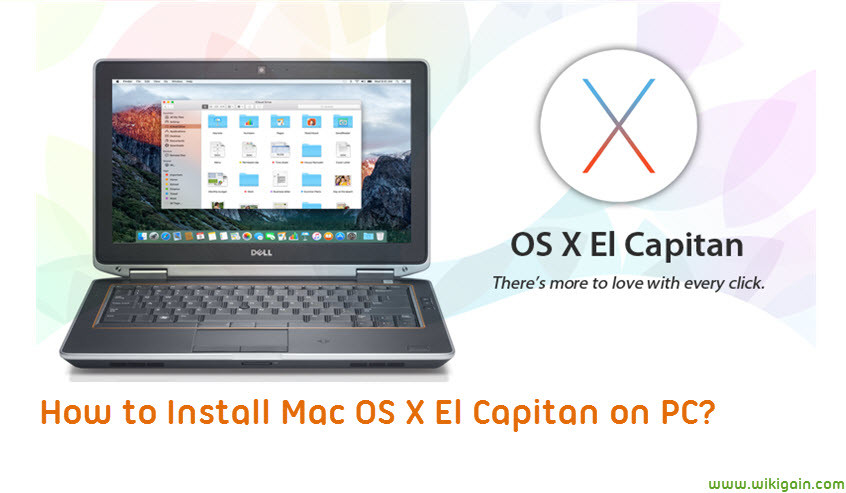Mac Os 10.11 6 Installer
Install older OS X onto an external drive. The following method allows you to download Mac OS X Lion, Mountain Lion, and Mavericks. Start your Mac holding down Command + R. Prepare a clean external drive (at least 10 GB of storage). Within OS X Utilities, choose Reinstall OS X. Select external drive as a source. Enter your Apple ID. Check if your device is compatible with OS X EI Capitan update and install OS X 10.11.6/10.11.4 to your MacBook/iMac. Apple's latest update to Mac OS X, 10.11 El Capitan, is currently available in the Mac App Store for everyone to download and install at no cost. The new OS features Split View mode for better multitasking, a cleaner Mission Control, smarter Spotlight, a way to mute Safari tabs playing audio, enhanced Mail and Notes apps, and more.
Minecraft windows 10 beta download. The various ways of checking for software may only show updates to the current main system version you are running (e.g., 10.4.8 --> 10.4.11), not upgrades to a higher system version such as a jump from El Capitan (10.11) to Catalina (10.15). Note the difference between an update and an upgrade.
We can provide more specific advice if we know more about your computer model, year, and specifications. To get more information about your computer choose Apple menu > 'About This Mac' in the upper left corner of any window, then 'More Info..' or 'System Report'. Copy and paste the information here, but omit the serial number and UUIDs (if present). More about this in 'About System Information [Profiler] on your Mac' - https://support.apple.com/HT203001
You can also use the computer information and the links below to yourself determine what is possible with your computer.

Click on this link to read how to get other versions of macOS - https://support.apple.com/HT211683
- This article also has links to system requirements for each OS version which you should check against your exact computer model. Note some of the model identifier articles are outdated. For any model produced in the last 5 years or so you should use the system requirements links for each OS version instead. This web site also has a reliable presentation of model and OS version compatibility: https://eshop.macsales.com/guides/Mac_OS_X_Compatibility
- Make sure you have more RAM than what is noted as 'minimum' for any particular system or your computer may run slowly.
- You may find you need to use Safari to get links for High Sierra and later using the Mac App Store application to open a functioning page.


- Sierra, El Capitan, and Yosemite download as a .pkg. Click on this to have a converted version placed in your Applications folder as an 'Install OS..' application. Run the installer and follow the directions.
- Upgrades may take some time (up to an hour or more) to install, with restarts and blank screens.

Back up your data in case something goes wrong --> Back up your Mac with Time Machine - https://support.apple.com/HT201250 or use a cloning tool.

Check if your old apps will still work with with the OS you want to install - https://roaringapps.com/apps This is particularly critical if you are upgrading to Catalina or newer.
Feb 1, 2021 9:33 AM Xf-mccs6.exe (keygen-x-force).
It was 2009 when Apple last released a new operating system on physical media. Things have proceeded remarkably smoothly since version 10.7 switched to download-only installers, but there are still good reasons to want an old, reliable USB stick. For instance, if you find yourself doing multiple installs, a USB drive may be faster than multiple downloads (especially if you use a USB 3.0 drive). Or maybe you need a recovery disk for older Macs that don't support the Internet Recovery feature. Whatever the reason, you're in luck, because it's not hard to make one.
As with last year, there are two ways to get it done. There's the super easy way with the graphical user interface and the only slightly less easy way that requires some light Terminal use. Here's what you need to get started.
- A Mac that you have administrator access to, duh. We've created El Capitan USB stick from both Yosemite and El Capitan, but your experience with other versions may vary.
- An 8GB or larger USB flash drive or an 8GB or larger partition on some other kind of external drive. For newer Macs, use a USB 3.0 drive—it makes things significantly faster.
- The OS X 10.11 El Capitan installer from the Mac App Store in your Applications folder. The installer will delete itself when you install the operating system, but it can be re-downloaded if necessary.
- If you want a GUI, you need the latest version of Diskmaker X app. Version 5 is the one with official El Capitan support.
- Diskmaker X is free to download, but the creator accepts donations if you want to support his efforts.
The easy way
Mac Os 10.11 6 Installer Crack
Once you've obtained all of the necessary materials, connect the USB drive to your Mac and run the Diskmaker X app. Pvz trainer 4 free download. The app will offer to make installers for OS X 10.9, 10.10, and 10.11, and it should run on OS X versions all the way back to 10.7—support for 10.6 was dropped in the most recent release.
AdvertisementDiskmaker X has actually been around since the days of OS X 10.7 (it was previously known as Lion Diskmaker), and it's still the easiest GUI-based way to go without intimidating newbies. If you're comfortable with the command line, it's still possible to create a disk manually using a Terminal command, which we'll cover momentarily.
Select OS X 10.11 in Diskmaker X, and the app should automatically find the copy you've downloaded to your Applications folder. It will then ask you where you want to copy the files—click 'An 8GB USB thumb drive' if you have a single drive to use or 'Another kind of disk' to use a partition on a larger drive or some other kind of external drive. Choose your disk (or partition) from the list that appears, verify that you'd like to have the disk (or partition) erased, and then wait for the files to copy over. The process is outlined in screenshots above.
The only slightly less-easy way
If you don't want to use Diskmaker X, Apple has actually included a terminal command that can create an install disk for you. Assuming that you have the OS X El Capitan installer in your Applications folder and you have a Mac OS X Extended (Journaled)-formatted USB drive named 'Untitled' mounted on the system, you can create an El Capitan install drive by typing the following command into the Terminal.
Mac Os 10.11 6 Installer Download
sudo /Applications/Install OS X El Capitan.app/Contents/Resources/createinstallmedia --volume /Volumes/Untitled --applicationpath /Applications/Install OS X El Capitan.app --nointeraction
Mac Os 10.11 6 Installer
The command will erase the disk and copy the install files over. Give it some time, and your volume will soon be loaded up with not just the OS X installer but also an external recovery partition that may come in handy if your hard drive dies and you're away from an Internet connection.
Mac Os 10.11 6 Installer Download
Whichever method you use, you should be able to boot from your new USB drive either by changing the default Startup Disk in System Preferences or by holding down the Option key at boot and selecting the drive. Once booted, you'll be able to install or upgrade El Capitan as you normally would.